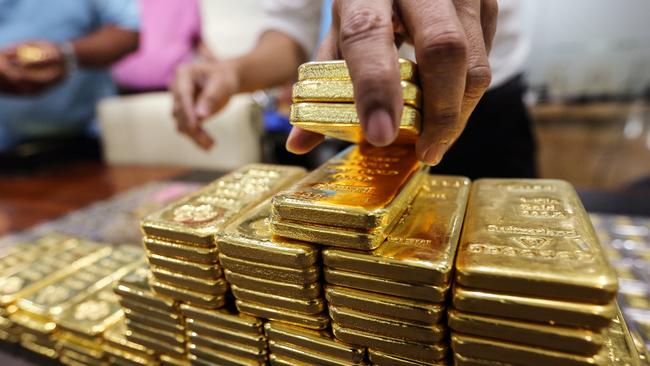
But rather than old fashioned bullion, the trend is now moving towards Exchange Traded Funds (ETF).
Australia’s best known gold ETF, the ETF Securities managed GOLD fund reports inflows are running at more than triple what the fund was getting two years ago.
The trend is universal with Bloomberg reporting worldwide gold holdings in ETFs rose to their highest level in nine years at the end of last month. (Exchange Traded Funds are listed index funds where a manager aims to reflect an underlying index price or commodity price such as the gold price).
ETF securities reports inflows of $35m in the month of January, triple what the fund was getting on a good month two years ago.
In February so far, the fund has had inflows of $7m in a matter of days.
“It’s remarkable and it’s due to a string of factors, but key among them is the realisation among many investors that an ETF is a way into gold ... it is still a new channel for many investors,” says Kris Walesby chief executive of ETF Securities, the Australian group founded by The List: Rich 250 member Graham Tuckwell.
What’s more, with increased risks in elevated share market valuations, there is every chance the trend will extend in the months ahead for three reasons.
First, gold is being used as a defensive alternative assets in the face of rising equity multiples share prices.
Second, gold ETFs though lacking yield or dividends are regarded as an asset class that can offer positive returns in contrast to cash.
Third, the widening acceptance of ETFs in all markets including Australia as a liquid (easy to sell) choice for retail investors widen the appeal of commodity specific products.
Though the ETF Securities GOLD ETF was the first such product launched in the local market, the fund has since been flanked by other securities such as the Betashares gold bullion currency hedged ETF.
Investors are also being drawn to the ASX-listed Perth mint gold, which is a security that allows investors to have “rights” over gold held at the Perth Mint, the West Australia-based state government owned gold producer and storage facility.
The gold price - in US dollars - is forecast by the World Bank to rise by 6 per cent this year.
In Australia, the price will always be influenced by currency movements. With our weaker dollar in 2019 local gold ETFs were up around 20 per cent over the past 12 months.
Some advisers and investors remain concerned about the distance between the investor and the commodity in ETF products, there is also concerns that ETFs may struggle to actually match their digital holdings with bullion holdings if there are very severe swings in underlying prices.
Nonetheless, conservative investors are clearly using the ETFs as a way into the market without the complex business of actually holding gold or buying into gold miners, which can be volatile.
“The ETF products are a useful alternative, a lot of investors are looking at gold and they realise that holding gold bullion directly, with all its associated costs, is an expensive business,” says Will Hamilton at Hamilton Wealth Management, a regular contributor to The Australian.
According to the World Gold Council, inflows into global gold-backed ETFs and similar products pushed total holdings to a new record at the end of 2019.






Faced with rock bottom interest rates and increasingly volatile sharemarkets Australian investors are moving serious money into gold.